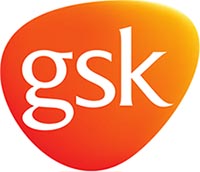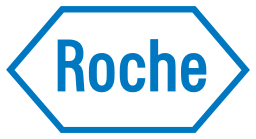
On this page:
Our industry collaborators | Featured projects | Highlighted publications | Awards and achievements | Our academics | MSc and CPD courses | Events and conferences | Contact us
The Centre for Applied Pharmacokinetic Research (CAPKR) is a consortium of academic researchers at The University of Manchester and ten industrial pharmaceutical companies.
Our mission is to understand what happens to drugs when they enter the body – where they go, how they are metabolised and how quickly. In particular, we seek to understand how differences of genetics, lifestyle and disease affect what happens to drugs.
This understanding leads to more appropriate drugs and dosing for each patient (so called 'precision medicine') and more economic use of drugs by the NHS and other healthcare providers.
What we do
- We quantify the proteins responsible for the metabolism and transport of drugs in the body, by various proteomic methodologies, mainly based on tandem mass spectrometry.
- We determine activities of human and animal drug metabolising enzymes and transporters using different in vitro systems. We use in silico models to extrapolate from in vitro to in vivo (IVIVE).
- We use such models to predict pharmacokinetic parameters for different drugs in different groups of patients.
- We determine effective, safe and economical dose regimes for different groups of patients.
Our industry collaborators
The CAPKR industrial consortium was established in 1996 by Professor Malcolm Rowland at The University of Manchester.
The aim is to generate a centre of excellence in research and training of pharmacokinetics, and engage in problems of interest to the pharmaceutical industry. As such, we have collaborations with a number of organisations.
AbbVie

AbbVie is a research-based global biopharmaceutical company committed to developing innovative, advanced therapies for some of the world's most complex and critical conditions. The company's mission is to use its expertise, dedicated people and unique approach to innovation to markedly improve treatments across four primary therapeutic areas: immunology, oncology, virology and neuroscience. But we do more than treat diseases. With ~30,000 employees and marketed products in more than 175 countries, we aim to make a remarkable impact on people’s lives.
The DMPK-BA organization plays a vital role in increasing probability of success of AbbVie's pipeline, supporting early Discovery and continuing through all phases of clinical development. We provide:
- Mechanistic understanding of ADME; in vitro ADME, CYP/transporter and biotransformation data
- Prediction of human exposure, formulation/food effects, DDI (PBPK modeling)
- FIH dose recommendation and efficacious dose regimen prediction
- Target assessment/quantification using proteo(geno)mics
- Preclinical and Clinical Biomarker, PK (small and large molecules), and Immunogenicity bioanalysis
- Mechanistic understanding of efficacy and safety endpoints through translational modeling and simulation (PK/PD; Quantitative System Pharmacology)
DMPK-BA is the driving force of Translational Science, bringing transformative medicines to patients.
Eli Lilly

Lilly focus internal research efforts primarily on four core therapeutic areas: specialty care, diabetes, oncology and animal health. They also continue to pursue innovative science and new opportunities beyond our targeted disease categories.
Genentech

A member of the Roche Group, Genentech has been at the forefront of the biotechnology industry for more than 40 years, using human genetic information to develop novel medicines for serious and life-threatening diseases. Genentech has multiple therapies on the market for cancer & other serious illnesses.
The Drug Metabolism and Pharmacokinetics (DMPK) group at Genentech is dedicated to enabling the discovery, development and commercialization of safe and effective medicines by elucidating the absorption, distribution, metabolism, excretion and pharmacokinetic properties of small molecule drug candidates. We accomplish this through the application of state of the art technologies, leveraging both internal and external collaborations.
GSK

GSK are a science-led global healthcare company with a special purpose: to help people do more, feel better, live longer.
They have 3 global businesses that research, develop and manufacture innovative pharmaceutical medicines, vaccines and consumer healthcare products.
Janssen

Janssen focus their efforts and resources where the need is high, the science is compelling and where they have the greatest opportunity to save and improve lives.
Merck

Merck is a leading science and technology company in healthcare, life science and performance materials. As the largest of Merck’s three business sectors, Merck Healthcare has about 20,000 employees around the world work in Europe, North America, Asia, Africa and Latin America and is dedicated to driving innovation in science and technology for real improvement of patients' lives.
The biopharma portfolio of the healthcare sector focuses on the therapeutic areas of oncology, neurology, immunology, fertility, general medicine and endocrinology.
Merck-sponsored project
PBPK models of gastrointestinal and hepatic cancers
Cancer patients are characterised by high drug exposure variability.
The aim of this project is to create virtual cancer patient populations, in order to understand the variability of drug metabolism in cancer patients, and predict the disease impact on the gastrointestinal and hepatic cancers.
This will be achieved firstly through the quantification of DMEs and transporters by using LC-MS/MS.
These measurements will be incorporated into PBPK models and the models will be validated by the assessment of the disease impact on small molecule anti-cancer drugs. The overall accomplishment will be the improvement of cancer population profiles in existing PBPK models.
Project by PhD student Areti Vasilogianni.
Supervisors: Dr Sheila-Annie Peters (Merck), Professor Amin Rostami, Dr Adam Darwich, Dr Jill Barber (CAPKR).
Takeda Pharmaceuticals

Takeda Pharmaceuticals is a global company with a 236 year long, rich drug discovery and development history. Takeda always conducts drug discovery/ business based on its core values (Takeda-isms) and priorities.
Takeda-ism (integrity, fairness, honesty, perseverance) and the four priorities (patient, trust, reputation, business) are deeply ingrained in Takeda’s ways of working to ensure its commitment to quality and that Takeda does the right thing – at all times.
Takeda focuses on four major therapeutic areas including neuroscience, gastroenterology, vaccines, and oncology. An additional therapeutic area, rare diseases, will soon be added to Takeda’s portfolio. Takeda is and will continue to aspire to bring better health and a brighter future for people worldwide.
Potential industrial partners
If you would like to work with us, please contact the centre directors Professor Amin Rostami and Professor Aleksandra Galetin.

Featured projects
CAPKR has around 10 post-doctoral associates, 20 PhD students and several visitors working on various projects related to our mission. Here are just a few of them.
We are supported by the Manchester Bio-Bank and Christie Hospital to supply tissue and resources, as available.
The Centre has access to a strong laboratory and technical infrastructure to support model-informed drug development, supplemented by close collaborations with academics and scientists from the University of Manchester's technology platforms, such as the biological mass spectrometry and bioimaging facilities, possessing state-of-the-art resources.
Current projects
Liquid biopsy and endogenous biomarkers to enhance or replace specific DDI studies in patient populations
The project investigates the impact of inflammatory diseases (including cancer) on the suppression of metabolic enzymes (for example, CYP3A4) and transporters (for example, OATP1B1/3) at transcriptional and functional level in specific patient populations using liquid biopsies (LB).
This project also examines the effect of specific drugs on endogenous biomarkers (EB) of drug metabolizing enzymes/transporters. Endogenous biomarker and liquid biopsy data in the plasma samples from the same individuals will be leveraged to establish the relationship between the protein expression and functional activity of enzyme/transporters of interest in order to refine corresponding PBPK models in patient populations and address issues related to drug-drug or drug-disease interactions.
PI/researchers: Dr Nihan Izat (postdoc), Prof Aleksandra Galetin, Prof Amin Rostami
Funders/industry collaborators: CAPKR Consortium Members
Quantification of drug-metabolizing enzymes and transporters
Full title: Quantification of drug-metabolizing enzymes and transporters in healthy and diseased kidney, and the development of physiologically-based pharmacokinetic models of the kidney
The project aims to quantify drug metabolising enzymes (DME) and transporters in healthy and autosomal dominant polycystic kidney disease (ADPKD) to identify the expression of drug transporters and DMEs in ADPKD patients using global proteomic analysis, and use this data to generate a PBPK model of ADPKD population.
PIs/researchers: Dr Jill Barber (supervisor), Dr Zubida Al Majdoub and Prof Amin Rostami (co-supervisors), Annika Tillman (PhD student)
Funders/industry collaborators: DrugTRAIN: This project has received funding from the European Union's Horizon 2020 research and innovation programme under the Marie Skłodowska Curie grant agreement No 955879
Physiologically-based pharmacokinetic modelling for aldehyde oxidase
Physiologically-based pharmacokinetic modelling for aldehyde oxidase: establishing a translational PBPK framework for human aldehyde oxidase
The primary focus of the proposed project is to develop physiologically-based pharmacokinetic (PBPK) models for selected aldehyde oxidase (AO) substrates (and mixed aldehyde oxidase/ cytochrome P450 substrates).
The PBPK models will be informed and verified by in vitro data, quantitative protein abundance and clinical pharmacokinetics and drug-drug interaction (DDI) data.
The emphasis of the project is on elucidating the current gaps and limitations for quantitative translation of clearance and DDIs for AO substrate drugs within the PBPK framework. It is anticipated the research will lead to new approaches to delineate, quantify and predict the in vivo roles of hepatic and non-hepatic AO and other metabolic pathways (for example, cytochrome P450).
Expected outcome of the research will be a novel roadmap for in vitro-in vivo extrapolation linked with PBPK models for aldehyde oxidase-mediated metabolism and DDIs for application in drug discovery and development.
PIs/Researchers: Dr Daniel Scotcher, Prof Aleksandra Galetin, Dr Jill Barber, Prof Brian Houston, Dr Nihan Izat (post doc)
Funders/Industry collaborators: CAPKR Consortium Members
Integration of drug release and permeability with systems data
Full title: Integration of drug release and permeability with systems data relevant to PBPK model of nose-to-brain axis and verification using clinical data
This project aims to develop a nasal PBPK model including at least one pathway for nose-to-brain drug delivery. Furthermore, a prediction of local brain and systemic PK for selected target compounds will be performed.
Finally, model credibility will be established for the nasal PBPK model with available data from literature, from generated experimental data, or both.
PI/researchers: Dr Saeed Rezaa (postdoc), Dr Kayode Ogungbenro, Prof Amin Rostami, Prof Aleksandra Galetin
Funders/industry collaborators: FDA, IMIM Spain
Advancing the permeability-limited liver model
Full title: Advancing the permeability-limited liver model with focus on CL passive diffusion and ft of dual hepatic transporter/CYP substrates
This project aims to improve determination of the rate-determining steps for dual substrates of hepatic transporter/CYP substrates, and IVIVE of passive diffusion clearance, together with fraction transported.
The project involves both experimental and modelling elements, with the aim to advance prospective prediction of transporter-mediated clearance and DDI using permeability-limited liver model with zonation.
PI/researchers: Dr Marie-Noelle Paludetto (postdoc), Prof Aleksandra Galetin, Dr Dan Scotcher (supervisor), Prof Brian Houston
Funders/industry collaborators: CAPKR Consortium Members
Quantification of brain metabolizing enzymes, transporters and biomarkers in CSF
Full title: Quantification of the brain metabolizing enzymes, transporters and biomarkers in human cerebrospinal fluid (CSF) and brain tissue with neurodegenerative diseases
This project conducts proteomic analysis of blood brain barrier microvessels (both targeted and global analysis) alongside isolating exosomes from CSF and perform transcriptomics analysis using RNAseq.
The aim is to quantify abundance and assess interindividual variability of drug metabolizing enzymes, transporters and specific PD Biomarkers in matched exosomes of human cerebrospinal fluid (CSF) and neurodegenerative disease brain tissue
PI/researchers: Dr Isaebeau Vermeulen (postdoc), Dr Zubida Al Majdoub, Dr Kayode Ogungbenro, Prof Amin Rostami, Prof Aleksandra Galetin
Funders/industry collaborators: Servier
Development of integrated population PK/PD and PBPK/PD models
The project aims to use pre-clinical and clinical data to integrate PBPK (physiologically-based pharmacokinetic) and PopPK (population pharmacokinetic) modelling processes through a middle-out approach (due to the overlapping mechanistic approach in the PopPK and PBPK models), to better explain variability in patient populations, leading to more informed and robust predictions and efficient drug development.
PI/researchers: Dr Frederic Lusoli, Dr Kayode Ogungbenro, Dr Leon Aarons
Funders/industry collaborators: CAPKR Consortium Members
The human blood-brain barrier
Quantification of human blood-brain barrier drug transporters and solute carriers in health and disease
The blood-brain barrier (BBB) remains a focal point of interest for many scientists who are working on approaches to deliver various therapeutic agents into the brain.
Alterations to BBB proteins can lead to changes in brain function affecting the susceptibility of the CNS to exposure to xenobiotics in the systemic circulation.
Dr Zubida's research focused on the quantification of transporters, enzymes and other proteins at BBB and measurement protein content of the microvascular fraction to populate PBPK model predicting drug disposition and the potential differences in health and disease.
Lead: Dr Zubida Al-Majdoub (working with Dr Jill Barber and Professor Amin Rostami)
Quantitative Systems Pharmacology Modelling for Translating Animal models of Neuroinflammation
Quantitative Systems Pharmacology Modelling for Translating Animal models of Neuroinflammation
Neurodegenerative diseases are becoming an increasing burden to healthcare systems with few impactful treatment options currently available. Chronic neuroinflammation has been identified as a major contributing factor in many neurodegenerative diseases such as Alzheimer’s, amyotrophic lateral sclerosis, Parkinson’s and Huntington’s.
A reason behind the difficulty in bringing effective drugs to market is the poor translatability of current pre-clinical animal and cellular models into human patients. No one model can faithfully replicate the complex pathology that is observed in humans.
The objective of this project is to develop a hybrid quantitative systems pharmacology (QSP) model with machine learning algorithms of the neuroinflammatory response in neurodegenerative diseases. This model aims to relate the molecular determinants of disease progression observed in animals to human clinical outcomes.
PIs/researchers: Dr Kayode Ogungbenro (supervisor), Dr Guy Meno-Tetang and Prof Amin Rostami (co-supervisors), Alex Foster-Powell (PhD student)
Funders/Industry collaborators: BBSRC and AstraZeneca
Quantitative Expression and Inter-Individual Variability of Skin Proteins Involved in Drug and Excipient Metabolism and Transporters Using Targeted and Label Free LC MS/MS Proteomics
Quantitative Expression and Inter-Individual Variability of Skin Proteins Involved in Drug and Excipient Metabolism and Transporters Using Targeted and Label Free LC MS/MS Proteomics
The project will generate the most comprehensive quantitative data set of xenobiotics metabolizing enzymes and transporters in human skin with indication of attributes defining population variability (e.g. race, sex, age). The information is essential for building robust models of dermal drug absorption and for understanding the influence of formulation ingredients (e.g. excipients, vehicle) with implication for developing faster and safer new complex generic dermal products. The data will be incorporated into the structure of physiologically based pharmacokinetic software (MechDermA PBPK, Simcyp) as proof of concept and will be used for predicting dermal absorption based on in vitro data under the newly established framework of virtual clinical trials in diverse population of patients.
PIs/researchers: Dr Jill Barber, Prof Amin Rostami, Dr Zubida Al-Majdoub, Sebastian Polak, Kanika Thakur (Certara’s Simcyp)
Funder: Department of Health and Human Services, U.S. Food and Drug Administration (FDA)
Industry collaborator: Certara’s Simcyp
Inter-organ relationship between expression and activity of gut and liver enzymes
Evaluating protein abundance vs. activity relationships of drug-metabolizing enzymes (CYP and UGT) in the human liver and small intestine
Current approaches for bottom-up prediction of intestinal and hepatic metabolic clearance, including biologically-associated variability, depend on assumption that enzyme activity is proportional to specific protein abundance. This activity-abundance proportionality is assumed to hold irrespective of the organ or patient characteristics. However, there is limited evidence to support this beyond the work done for intestinal and hepatic CYP3A4 (Gertz et al Drug Metab Dispos 2010, 38(7):1147-58).
The project aims to investigate relationship between expression and functional activity of major CYP and UGT drug metabolizing enzymes between human liver and gut. Using CAPKR’s expertise in functional and proteomic analysis, project aims to measure enzyme abundance and activity of specific probes in matched liver and intestinal samples obtained from the same human donors. Implications of the findings on the quantitative translation of drug clearance and drug-drug interactions will be investigated.
Leads: Dr Zubida Al-Majdoub (working with Dr Aleksandra Galetin (PI), Dr Jill Barber, Dr Daniel Scotcher, Professor Amin Rostami)
Funder: CAPKR consortium-sponsored project
PBPK modelling in obesity based on considerations of host-microbiome interplay
Despite current knowledge of contributors to inter-individual variability in pharmacokinetics (such as drug enzyme and transporter genotypes, and age), heterogeneity in drug responses still confounds individualization of drug regimens. Orally administered drugs encounter gut microbiota in the intestine prior to absorption, potentially affecting pharmacokinetics either directly or indirectly through interacting with the host’s drug metabolizing enzymes and drug transporters.
This project, funded by Norwegian Research Council, is part of an interdisciplinary framework with the overarching aim of investigating optimization of drug therapy in obesity based on considerations of host-microbiome interplay. Using advanced computational approaches, this project will aim to amend existing physiologically-based pharmacokinetic (PBPK) models for healthy subjects in order to capture changes in obesity and any gut microbiome effect on key metabolizing enzymes and drug transporters, for example, CYP3A, P-glycoprotein and OATP1B1.
Once validated, these models will provide powerful quantitative translational tools for predicting drug-drug interaction risk in these patient cohorts.
PIs/researchers: Hari Kangne (PhD student), Aleksandra Galetin (PI), Kayode Ogungbenro, Dr Nihan Izat
Funders/industry collaborators: Norwegian Research Council
Quantitative evaluation of renal organic anion transporter activity in drug interactions and chronic kidney disease
This project combines albumin-mediated uptake in vitro experiments, PBPK modelling and literature analysis to investigate changes to organic anion transporter 1/3 (OAT1/3) activity in case of drug-drug interactions and in renal impairment. Starting off with a retrospective analysis of published clinical data, a database of OAT1/3 substrates will be created and the effect of chronic kidney disease (CKD) on the activity of OAT1/3 will be evaluated.
The project will investigate the albumin-mediated uptake phenomenon and its impact on IVIVE of renal secretion and renal clearance of OAT1/3 substrates in healthy populations. In parallel, development of PBPK model for OAT1/3 endogenous biomarker and, clinical probe substrate and inhibitor will be performed to demonstrate application of biomarker-informed PBPK modelling to assess in vivo risk of OAT1/3 inhibition in early drug development.
Finally, extrapolation of in vitro OAT1/3 dataset and developed PBPK models to the CKD population will be performed by accounting for disease-related changes in protein binding and OAT1/3 activity to increase our confidence in predicting pharmacokinetics in this patient population.
PIs/researchers: Shawn Pei Feng Tan (PhD student), Prof Aleksandra Galetin, Prof Amin Rostami, Dr Daniel Scotcher
Funders/industry collaborators: Agency for Science, Technology and Research, Singapore
Previous projects
See examples of our previous projects: Most recent previous projects (PDF).
Highlighted publications
CAPKR staff published 39 articles between February 2023 and June 2024.
Browse a selection of our publications (PDF, 69KB)
Plasma protein binding models for special populations
Full title: Facing the facts of altered plasma protein binding: do current models correctly predict changes in fraction unbound in special populations?
Authors: Jokha Al-Qassabi, Shawn Pei Feng Tan, Patcharapan Phonboon, Aleksandra Galetin, Amin Rostami-Hodjegan, Daniel Scotcher
URL: https://doi.org/10.1016/j.xphs.2024.02.024 (2024)
Robust evaluation of models for predicting drug plasma protein binding differences between populations. The predictions of fraction unbound in plasma (fu) solely based on changes in protein concentrations in plasma cannot explain the observed values in some special populations.
We recommend further consideration of the impact of changes in special populations to endogenous substances that competitively bind to plasma proteins, and changes in albumin structure due to posttranslational modifications. Physiologically-based pharmacokinetic models of special populations for highly bound drugs should preferably use measured fu data to ensure reliable prediction of drug exposure or compare predicted unbound drug exposure between populations, knowing that these will not be sensitive to changes in fu.
This research was recognised with Journal of Pharmaceutical Sciences 2024 Outstanding Early Career Scientist awards to Jokha Al-Qassabi and Dan Scotcher.
Physiologically based pharmacokinetic modelling for aldehyde oxidase substrates
Full title: Establishing a physiologically based pharmacokinetic framework for aldehyde oxidase and dual aldehyde oxidase-CYP substrates
Authors: Nihan Izat, Jayaprakasam Bolleddula, Pasquale Carione, Leticia Huertas Valentin, Robert S. Jones, Priyanka Kulkarni, Darren Moss, Vincent C. Peterkin, Dan-Dan Tian, Andrea Treyer, Karthik Venkatakrishnan, Michael A. Zientek, Jill Barber, J. Brian Houston, Aleksandra Galetin, Daniel Scotcher
URL: https://doi.org/10.1002/psp4.13255 (2024)
This paper addresses challenges in using physiologically-based pharmacokinetic models of aldehyde oxidase (AO)-CYP dual substrates. The use of empirical scaling factors to support in vitro-in vivo extrapolation can support the early assessment of AO-mediated pharmacokinetics and drug-drug interaction (DDI) risks.
Due to uncertainty in fractional metabolism (fm) for AO substrates, clinical mass balance data, supported by robust reaction phenotyping, are considered crucial for developing PBPK models of aldehyde oxidase substrates. To overcome the lack of clinical index inhibitors of aldehyde oxidase, indirect verification of fractional metabolism of dual AO-CYP substrates can be done with CYP DDI data within a totality-of-evidence approach.
Understanding discordance between in vitro dissolution, local gut and systemic bioequivalence of budesonide
Full title: Understanding discordance between in vitro dissolution, local gut and systemic bioequivalence of budesonide in healthy and Crohn's disease patients through PBPK modeling
Authors: Chunyan Han, Tiancheng Sun, Siri Kalyan Chirumamilla, Frederic Y Bois, Mandy Xu, Amin Rostami-Hodjegan
URL: https://doi.org/10.3390/pharmaceutics15092237 (2023)
The most common method for establishing bioequivalence (BE) is to demonstrate similarity of concentration-time profiles in the systemic circulation, as a surrogate to the site of action. However, similarity of profiles from two formulations in the systemic circulation does not imply similarity in the gastrointestinal tract (GIT) nor local BE.
We have explored the concordance of BE conclusions for a set of hypothetical formulations based on budesonide concentration profiles in various segments of gut vs those in systemic circulation using virtual trials powered by physiologically based pharmacokinetic (PBPK) models. The impact of Crohn's disease on the BE conclusions was explored by changing physiological and biological GIT attributes.
Substantial 'discordance' between local and systemic outcomes of VBE was observed. Upper GIT segments were much more sensitive to formulation changes than systemic circulation, where the latter led to false conclusions for BE. The ileum and colon showed a lower frequency of discordance.
In the case of Crohn's disease, a product-specific similarity factor might be needed for products such as Entocort EC to ensure local BE. Our results are specific to budesonide, but we demonstrate potential discordances between the local gut vs systemic BE for the first time.
Impact of Crohn's disease on protein abundance of human intestinal drug-metabolising enzymes and transporters
Full title: Quantitative assessment of the impact of Crohn's disease on protein abundance of human intestinal drug-metabolising enzymes and transporters
Authors: Sarah Alrubia, Zubida M Al-Majdoub, Brahim Achour, Amin Rostami-Hodjegan, Jill Barber
URL: https://doi.org/10.1016/j.xphs.2022.07.012 (2022)
Crohn's disease affects the mucosal layer of the intestine, predominantly ileum and colon segments, with the potential to affect the expression of intestinal enzymes and transporters, and consequently, oral drug bioavailability. We carried out a quantitative proteomic analysis of inflamed and non-inflamed ileum and colon tissues from Crohn's disease patients and healthy donors.
Homogenates from samples in each group were pooled and protein abundance determined by liquid chromatography-mass spectrometry (LC-MS). In inflamed Crohn's ileum, CYP3A4, CYP20A1, CYP51A1, ADH1B, ALPI, FOM1, SULT1A2, SULT1B1 and ABCB7 showed ≥10-fold reduction in abundance compared with healthy baseline.
By contrast, only MGST1 showed ≥10 fold reduction in inflamed colon. Ileal UGT1A1, MGST1, MGST2, and MAOA levels increased by ≥2 fold in Crohn's patients, while only ALPI showed ≥2 fold increase in the colon.
Counter-intuitively, non-inflamed ileum had a higher magnitude of fold change than inflamed tissue when compared with healthy tissue. Marked but non-uniform alterations were observed in the expression of various enzymes and transporters in ileum and colon compared with healthy samples.
Modelling will allow improved understanding of the variable effects of Crohn's disease on bioavailability of orally administered drugs.
Dealing with variable drug exposure due to variable hepatic metabolism
Full title: Dealing with variable drug exposure due to variable hepatic metabolism: a proof-of-concept application of liquid biopsy in renal impairment
Authors: Amin Rostami-Hodjegan, Zubida M. Al-Majdoub, Yannick von Grabowiecki, Ka Lai Yee, Sudhakar Sahoo, Wolfgang Breitwieser, Aleksandra Galetin, Christopher Gibson, Brahim Achour
URL: https://doi.org/10.1002/cpt.3291 (2024)
Precision dosing strategies require accounting for between-patient variability in pharmacokinetics (PK), affecting drug exposure, and in pharmacodynamics (PD), affecting response achieved at the same drug concentration at the site of action.
Although liquid biopsy for assessing different levels of molecular drug targets has yet to be established, individual characterization of drug elimination pathways using liquid biopsy has recently been demonstrated. The feasibility of applying this approach in conjunction with modeling tools to guide individual dosing remains unexplored.
In this study, we aimed to individualize physiologically-based pharmacokinetic (PBPK) models based on liquid biopsy measurements in plasma from 25 donors with different grades of renal function who were previously administered oral midazolam as part of a microdose cocktail.
Virtual twin models were constructed based on demographics, renal function, and hepatic expression of relevant pharmacokinetic pathways projected from liquid biopsy output. Simulated exposure (AUC) to midazolam was in agreement with observed data (AFE = 1.38, AAFE = 1.78). Simulated AUC variability with three dosing approaches indicated higher variability with uniform dosing (14-fold) and stratified dosing (13-fold) compared with individualized dosing informed by liquid biopsy (fivefold).
Further, exosome screening revealed mRNA expression of 532 targets relevant to drug metabolism and disposition (169 enzymes and 361 transporters). Data related to these targets can be used to further individualize PBPK models for pathways relevant to PK of other drugs.
This study provides additional verification of liquid biopsy-informed PBPK modeling approaches, necessary to advance strategies that seek to achieve precise dosing from the start of treatment.
4-pyridoxic acid PBPK model to evaluate OAT1/3 inhibition and effect of chronic kidney disease
Full title: Development of 4-pyridoxic acid PBPK model to support biomarker-informed evaluation of OAT1/3 inhibition and effect of chronic kidney disease
Authors: Shawn Pei Feng Tan, Marie-Emilie Willemin, Jan Snoeys, Hong Shen, Amin Rostami-Hodjegan, Daniel Scotcher, Aleksandra Galetin
URL: https://doi.org/10.1002/cpt.3029 (2023)
This collaborative study with Janssen and BMS developed the first PBPK model for pyridoxic acid (PDA), an endogenous biomarker of renal OAT1/3.
This model can be applied to assess the in vivo risk of OAT1/3 inhibition in early drug development, informing clinical pharmacology strategy about the need for and timing of OAT-mediated DDI clinical studies.
Extension of the model to patients with renal impairment increases our confidence in predicting exposure and renal secretion in this patient population.
Physiological-based pharmacokinetic modeling trends in pharmaceutical drug development
Full title: Physiological-based pharmacokinetic modeling trends in pharmaceutical drug development over the last 20 years; in-depth analysis of applications, organizations, and platforms
Authors: Eman El-Khateeb, Susan Burkhill, Susan Murby, Hamza Amirat, Amin Rostami-Hodjegan, Amais Ahmad
URL: https://doi.org/10.1002/bdd.2257 (2021)
We assess the advancement of physiologically based pharmacokinetic (PBPK) modeling and simulation (M&S) over the last 20 years (start of 2000 to end of 2019) focusing on the trends in each decade with the relative contributions from different organizations, areas of applications, and software tools used.
Unlike many of the previous publications which focused on regulatory applications, our analysis is based on PBPK publications in peer-reviewed journals based on a large sample (>700 original articles). We estimated a rate of growth for PBPK (>40 fold/20 years) that was much steeper than the general pharmacokinetic modeling (<3 fold/20 years) or overall scientific publications (∼3 fold/20 years).
The analyses demonstrated that contrary to commonly held belief, commercial specialized PBPK platforms with graphical-user interface were a much more popular choice than open-source alternatives even within academic organizations. These platforms constituted 81% of the whole set of the sample we assessed.
The major PBPK applications (top 3) were associated with the study design, predicting formulation effects, and metabolic drug-drug interactions, while studying the fate of drugs in special populations, predicting kinetics in early drug development, and investigating transporter drug interactions have increased proportionally over the last decade.
The proportions of application areas based on published research were distinctively different from those shown previously for the regulatory submissions and impact on labels. This may demonstrate the lag time between the research applications versus verified usage within the regulatory framework.
The report showed the trend of overall PBPK publications in pharmacology drug development from the past 2 decades stratified by the organizations involved, software used, and area of applications. The analysis showed a more rapid increase in PBPK than that of the pharmacokinetic space itself with an equal contribution from academia and industry.
By establishing and recording the journey of PBPK modeling in the past and looking at its current status, the analysis can be used for devising plans based on the anticipated trajectory of future regulatory applications.
Mixed effects modeling of radiotherapy
Full title: Mixed effects modeling of radiotherapy in combination with immune checkpoint blockade or inhibitors of the DNA damage response pathway
Authors: David Hodson, Hitesh Mistry, Sofia Guzzetti, Michael Davies, Anna Staniszewska, Paul Farrington, Elaine Cadogan, James Yates, Leon Aarons, Kayode Ogungbenro
URL: https://doi.org/10.1002/psp4.13026 (2023)
This paper evaluated the efficacy and toxicity of radiotherapy when used in combination with immune checkpoint blockade or inhibitors of the DNA damage response pathway.
Membrane transporters in drug development and as determinants of precision medicine
Full title: Membrane transporters in drug development and as determinants of precision medicine
Authors: Aleksandra Galetin, Kim L.R. Brouwer, Donald Tweedie, Kenta Yoshida, Noora Sjöstedt, Lauren Aleksunes, Xiaoyan Chu, Raymond Evers, Michael J. Hafey, Yurong Lai, Pär Matsson, Andrew Riselli, Hong Shen, Alex Sparreboom, Manthena V.S. Varma, Jia Yang, Xinning Yang, Sook Wah Yee, Maciej J. Zamek-Gliszczynski, Lei ZhangKathleen M. Giacomini
URL: https://doi.org/10.1038/s41573-023-00877-1 (2024)
This position paper by the International Transporter Consortium highlights key advances in the transporter field, especially in the area of endogenous biomarkers, together with regulatory considerations and future directions.
Estimation of FMO3 Ontogeny by Mechanistic Population Pharmacokinetic Modelling of Risdiplam
Full title: Estimation of FMO3 Ontogeny by Mechanistic Population Pharmacokinetic Modelling of Risdiplam and Its Impact on Drug-Drug Interactions in Children
Authors: Yumi Cleary, Heidemarie Kletzl, Paul Grimsey, Katja Heinig, Kayode Ogungbenro, Hanna Elisabeth Silber Baumann, Nicolas Frey, Leon Aarons, Aleksandra Galetin, Michael Gertz
URL: https://doi.org/10.1007/s40262-023-01241-7 (2023)
Estimation of in vivo FMO3 ontogeny, applying population and physiologically-based pharmacokinetic modelling. The novel in vivo FMO3 ontogeny addresses the knowledge gap and is envisaged to improve prospective PK and DDI predictions of FMO3 substrates in children.
Awards and achievements
For the latest updates on CAPKR awards and achievements, please follow us on LinkedIn.
Posts about our awards and achievements can also be found on our blog.
Our academics
Seven academics make up CAPKR, all providing complementary expertise in applied pharmacokinetic research.
Together they provide experience in both in vitro and in vivo systems, as well as computer-based pharmacokinetics and pharmacodynamics, and omics, especially proteomics and transcriptomics of human and animal tissue.
Professor Amin Rostami – Director of CAPKR

Professor Amin Rostami is ranked in the top 0.07% of the Highly Cited Researchers list by Stanford University (published by Elsevier) for pharmacology (2022). He has published over 320 peer reviewed highly influential scientific articles (>23,000 citations, h-index = 85).
He was one of the founding editors of Pharmacometrics and System Pharmacology and serves on the editorial boards of several other journals. Further, Amin is listed as the most productive author in Physiologically-based Pharmacokinetics (PBPK) research in the last two decades of research (Wang et al, 2024, Pharm Res).
The work of Professor Rostami covers wide areas of drug development over the last 30 years, ranging from pharmaceutics (for example, bioavailability and bioequivalence) to clinical pharmacology (for example, mixture pharmacology of drug/metabolites), translational and systems pharmacology (such as quantitative proteomics of enzymes and transporter for in vitro to in vivo (IVIVE) scaling).
As the Director of the Centre for Applied Pharmacokinetic Research (CAPKR) at The University of Manchester, he collaborates with many pharmaceutical companies with a view to transfer the latest scientific applications into modern drug development. Amin was the co-founder of two spin-off companies from the University of Sheffield (Simcyp Limited (now part of Certara Inc)) and Diurnal Limited (now part of Neurocrine Bioscience)). As a leader in the field of PBPK and Quantitative Systems Pharmacology (QSP), he is internationally recognised for his expertise in IVIVE to predict the behaviour of drugs in the human body, and understanding the associated inter-individual variabilities.
Professor Aleksandra Galetin – Deputy Director

Professor Aleksandra Galetin is currently President of ISSX, in addition to her ongoing service on the ISSX Council. She also holds long-standing leadership position in the International Transporter Consortium (ITC), where she led multiple high-impact white papers, transforming research innovation into safe and effective use of medicine.
As a leader in the field of drug transporters and physiologically-based pharmacokinetic (PBPK) modelling, she is recognised internationally for her work in quantitative translation of transporter/metabolism data to in vivo (IVIVE), and PBPK modelling of complex patient populations/real-world scenarios to support regulatory approval of safer medicines. Recent research work expands to development of mechanistic modelling framework for endogenous biomarkers for hepatic and renal transporters for de-risking of transporter-mediated drug interactions in drug development.
As a Deputy Director of CAPKR, she is responsible for strategic planning and scientific organization of research projects that have significant impact on practises in drug development. Professor Galetin had her sabbatical in the US FDA Office of Clinical Pharmacology where she provided expert advice on the PBPK modelling of drug-drug interactions and specific populations in new drug applications. She has published extensively (H index 51, >7000 citations) and supervised/mentored over 40 graduate students and postdoctoral research associates.
These research activities are also captured in her CAPKR projects.
Professor Brian Houston – Advisor

In recent years Brian has been particularly active through his research and numerous conference presentations in promoting the use of in vitro and in silico systems for predicting human metabolism and pharmacokinetics.
Brian is a member of the editorial boards of several scientific journals, has experience on national science funding bodies and is a consultant to a number of pharmaceutical companies.
He is a Fellow of the American Association of Pharmaceutical Scientists (AAPS) and received the International Society for Study of Xenobiotics (ISSX) 2014 European Scientific Achievement Award.
He has supervised over 60 graduate students. His research publications in the area of drug metabolite kinetics in vivo and in vitro exceed 200 and are highly cited. He was named as a Thomson Reuters Highly Cited Researcher in 2015, ranking among the top 1% most cited scientists in his subject field (Pharmacology and Toxicology) earning him the mark of exceptional impact.
Dr Jill Barber – Proteomics Lead

Like many NMR spectroscopists, Jill became a mass spectrometrist in middle age, specialising in quantitative proteomics, particularly as applied to drug metabolism and disposition.
Her group is able to quantify enzymes and transporters in a variety of tissues and thereby feed data-hungry quantitative systems pharmacology models of health and disease.
Apart from research, Jill has won every teaching excellence award the University offers, and is also a National Teaching Fellow.
email: jill.barber@manchester.ac.uk
Dr Zubida Al-Majdoub - Proteomics Co-Lead

Zubida has research interests in pharmaco-‘omics’ with specific expertise in quantitative proteomics and transcriptomics as applied to pharmacologically-relevant pathways involved in drug metabolism and drug transport.
Her work was among the ‘first’ that contributed to the application of QconCAT technology to study ADME (absorption, distribution, metabolism, and excretion) proteins. This technology is now world leading in the field of Quantitative ADME to support mechanistic modelling and simulation.
She is also interested in liquid biopsy approach to monitor expression of ADME proteins and inter-individual variability.
Dr Kayode Ogungbenro – Modelling Lead

Kayode Ogungbenro is a Lecturer in Cancer Pharmacometrics and an Honorary Clinical Scientist at The Christie NHS Foundation Trust, Manchester.
His research activities within CAPKR are centred around population pharmacokinetics for top-down (empirical) and bottom-up (PBPK) models.
He is also interested in modelling pharmacodynamic data, optimal design and sample size calculations of population PK studies, population pharmacokinetics in special population (children) and computer aided clinical trial simulation.
Kayode is also the Director of MSc in Model-Based Drug Development which is based within CAPKR.
View Kayode's research profile
email: kayode.ogungbenro@manchester.ac.uk
Professor Leon Aarons – Pharmacokinetics and Pharmacodynamics Lead

Leon's major research interests lie in the area of pharmacokinetic and pharmacodynamics modelling.
He has a worldwide reputation in the area of population pharmacokinetics with applications in drug development and drug utilisation in a number of disease states including tropical diseases such as malaria. He is on the editorial boards of a number of journals including Emeritus Editor of the Journal of Pharmacokinetics and Pharmacodynamics.
He has supervised more than 40 postgraduate students, many of which have gone onto positions in academia and the pharmaceutical industry. For more than 20 years he has been teaching pharmacokinetics and pharmacodynamics courses in Europe, Australasia, the United States and Africa.
email: leon.aarons@manchester.ac.uk
Dr Daniel Scotcher - PBPK/IVIVE Lead

Dan is Physiologically-Based Pharmacokinetics (PBPK) / In Vitro In Vivo Extrapolation (IVIVE) Lead at CAPKR. He specialises in using computational models to predict drug metabolism and transport, focusing on PBPK models for translating in vitro data to clinical outcomes.
Dan has significant expertise in renal drug disposition and the impact of chronic conditions on pharmacokinetics. His interdisciplinary research includes modelling endogenous biomarkers and imaging biomarkers for drug transporter activity, and establishing a PBPK framework for aldehyde oxidase substrates.
Dan collaborates nationally and internationally with clinicians and the pharmaceutical industry. He serves on the editorial board of Drug Metabolism and Disposition and is the Deputy Director of the MSc in Model-Based Drug Development, leading units on PBPK modelling and IVIVE.

MSc and CPD courses
MSc and CPD courses in model-based drug development are available at The University of Manchester.
Students learn from experts at CAPKR and the University's Division of Pharmacy and Optometry.
MSc Model-based Drug Development
The MSc in Model-based Drug Development at emphasises mechanistic approaches for the assessment and prediction of pharmacokinetics and pharmacodynamics (PKPD), such as physiologically-based pharmacokinetics (PBPK).
Students will develop the modelling and simulation skills required during drug development, qualifying as a modeller with key skills in computational approaches in pharmacokinetics and pharmacodynamics. This includes experience of the R, Phoenix, NONMEM, MATLAB, Simcyp, and MONOLIX data analysis platforms.
The course also covers structured problems requiring theory and practical skills to solve typical problems that arise in drug development programmes.
The course is available as:
- a one-year full-time course with on-campus teaching;
- a two-year part-time course for off-campus distance learning students, particularly scientists in the pharmaceutical industries who want to expand their expertise.
Learn more and apply
Visit the course page for more information about the course, including a list of units, and details of how to apply:
Doctoral training
CAPKR hosts students to undertake a research project that will further improve their understanding of pharmacokinetics and modelling. We also provide a framework of postgraduate research training in research council-funded doctoral training partnerships.
Visit the Faculty of Biology, Medicine and Health website to learn more about funded PhD programmes and see all PhD programmes.
Continuing professional development
Our CPD units are designed for science, engineering or mathematics graduates, and scientists linked to the pharmaceutical industry who wish to expand their expertise while working in the industry.
The units are taken from the MSc Model-based Drug Development course and are taught as standalone CPD courses in blocks of either 6 weeks (15 credits per unit) or 12 weeks (30 credits per unit).
Students will develop the knowledge and skills required for making evidence-based decisions at various stages of drug development.
Learn more and apply
Visit the CPD course page for more information, including a list of available units, and details of how to apply:
Events and conferences
Find out more about events and conferences with CAPKR involvement.
Read about events and conferences we have attended on our blog.
Contact us
Get in touch if you have any questions.
Collaboration enquiries
Please contact Prof Amin Rostami or Prof Aleksandra Galetin.
Research enquiries
Please contact one of the academic leads listed above.
General enquiries
Please email the CAPKR Project officer, Dr Sayema Rahman Khan.
Email: sayema.khan@manchester.ac.uk
Follow us
For the latest updates on our projects, collaborations, awards, and news, follow us on LinkedIn: @capkr



